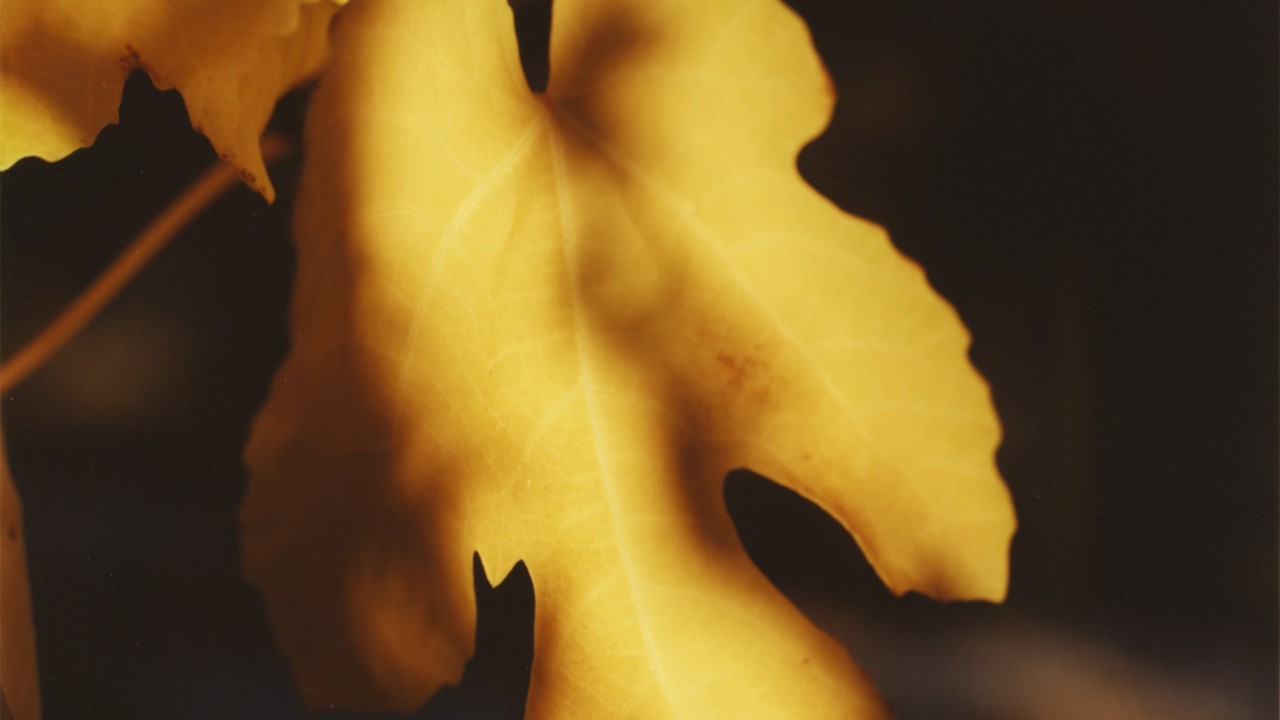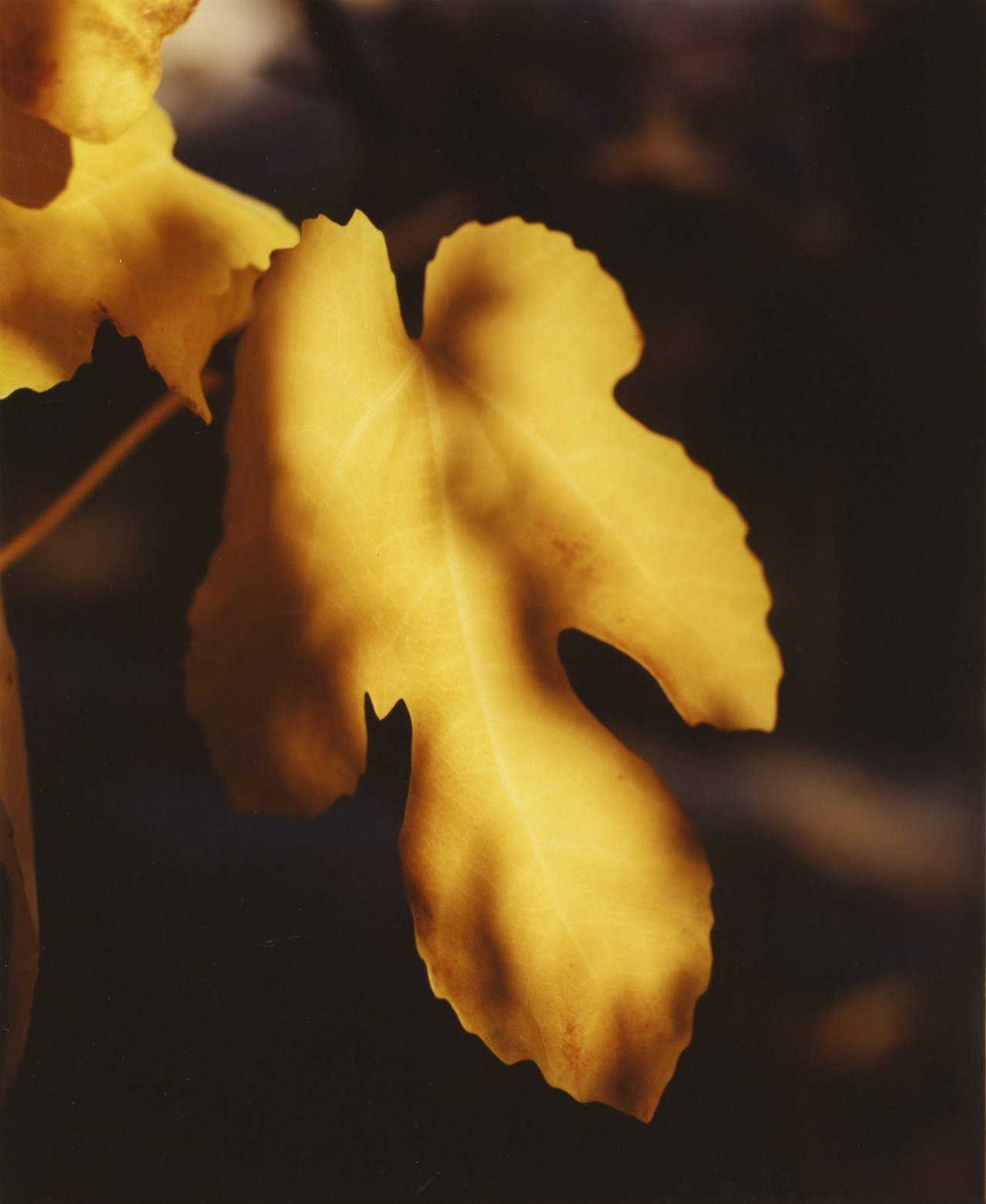

Photograph by Julien Sage / Kintzing
words by willow defebaugh
“Nature has taught me so much about moving with the seasons…the frenetic pace of doing, doing, doing without being present with each other and the season we are in, what is happening around us, is unnatural and counter to life.”
—Brenda Salgado
Autumn has arrived outside my window in Brooklyn, and with it, the turning of the leaves and the artistry that announces their impending absence. In botany, temperate trees that forfeit their foliage in follow with the seasons are called deciduous. By contrast, trees that retain their verdancy all throughout the year are known as evergreen. Deciduous trees that shed seasonally, meanwhile, are more than a vibrant display of nature’s virtuosity; they offer an elegant map for navigating the passage of time.
During summer, deciduous trees are easily recognizable by their large leaves: star-shaped maple and chestnut leaves that stretch out in every direction, long willow leaves, elliptical elms. Meanwhile, evergreen leaves tend to have less surface area: thin cedar leaves, narrow pine needles, slender spruces. Deciduous leaves grow generously in order to capture maximum sunlight during summer months so that the trees have enough energy to last them through winter when dwindling daytime means less light and that water in leaves would freeze—a form of forecasting for the future.
As temperatures drop with the arrival of autumn, hormones in deciduous trees trigger a process known as abscission. The trees begin to absorb the nutrients of their leaves for safekeeping—to eventually serve as reservoirs for winter. Among the molecules broken down is chlorophyll, which makes the leaves appear green. As this pigment recedes, these leaves begin to take on red, orange, and yellow hues. At the end of this natural process, they begin to fall off—each fragment of foliage having fulfilled its purpose.
Come winter, abscission has allowed deciduous trees to conserve energy by removing their most vulnerable parts. Holding onto their leaves would likely result in breakage in the extreme winds and cold of winter. For evergreens, on the other hand, the sturdiness of their leaves comes with other requirements: they need more nutrients to stay in good condition consistently throughout the year. Thanks to their preparation during preceding seasons, deciduous trees are able to survive the winter with fewer needs. They can rest with branches bare before blooming again.
When the birds sing of the return of spring, barren branches serve another purpose: propagation. Many deciduous trees and other plants flower when they are leafless. With barren branches and empty appendages, chances increase for pollination by wind as well as winged visitors that might otherwise miss the flowers. This approach is not without its dangers; when temperatures fluctuate, these exposed flowers can be frozen by frost. When the time comes, deciduous plants take the risks required of regeneration.
Deciduous trees are an extraordinary example of what it looks like to live in harmony with the cycles of nature—and what hangs in the balance should fossil fuel pollution continue to wreak havoc on our climate and the intricate and delicate processes that depend on it. Research has found that, with higher temperatures and therefore more productive spring and summer seasons, trees reach capacity and start shedding their leaves earlier, significantly impacting their ability to capture and store carbon from the atmosphere.
I wonder if evergreens envy the progression of their deciduous kin—if firs and hemlocks long to lose their leaves and change colors with the weather. I wonder if ashes and rowans ever wish they could make the seasons stand still, to stay the same. However perilous the path, this willow would rather be deciduous any day. I would rather savor the sweetness of the sun and be mindful of the future. I would rather release my grip on the past and show how glorious it can look to let go of what’s no longer working. I would rather use my energy wisely and repose when the time is right. I would rather risk it all and watch our world come alive again. What about you?
Editor’s Note: This story was originally published in 2021. The version above was edited and adapted for The Overview book.
In Season